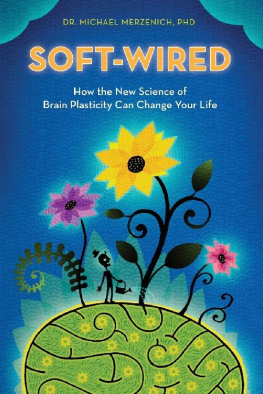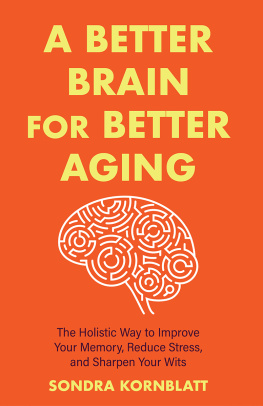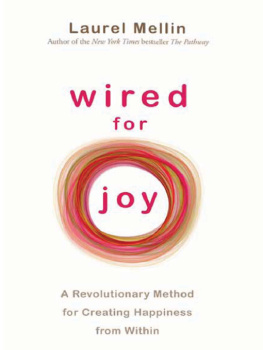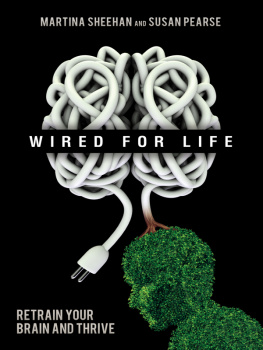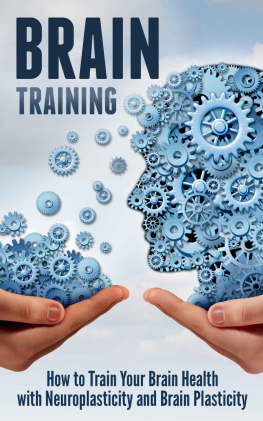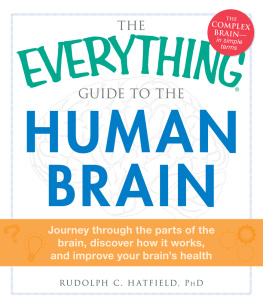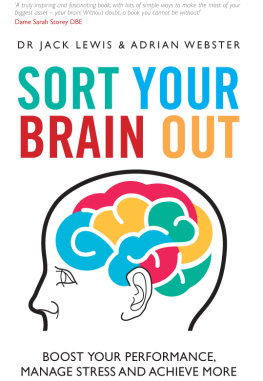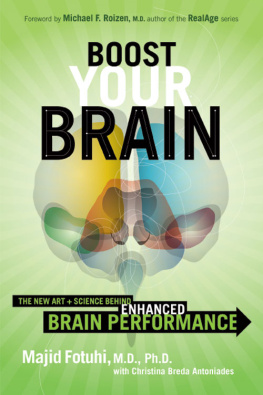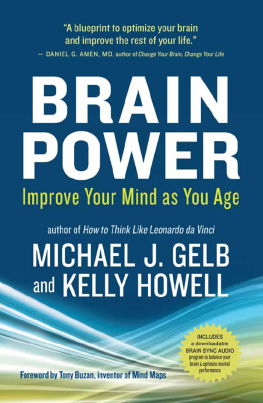SOFT-WIRED
How the New Science of Brain Plasticity Can Change Your Life
Dr. Michael Merzenich, PhD
Copyright 2013 Michael Merzenich
All rights reserved.
Except in the United States of America, this book is sold subject to the condition that it shall not, by way of trade or otherwise, be lent, resold, hired out, or otherwise circulated without the publishers prior consent in any form of binding or cover other than that in which it is published and without a similar condition including this condition being imposed on the subsequent purchaser.
The scanning, uploading, and distribution of this book via the Internet or via any other means without the permission of the publisher is illegal and punishable by law. Please purchase only authorized electronic editions, and do not participate in or encourage electronic piracy of copyrighted materials. Your support of the authors rights is appreciated.
ISBN: 0989432807
ISBN-13: 978-0989432801
Parnassus Publishing, LLC
San Francisco
Cover Art (Copyright) by Hugh D'Andrade
Jacket Design by Arin Fishkin
CONTENTS
ACKNOWLEDGEMENTS
This book is dedicated to the hundreds of scientists, engineers, medical doctors, therapists, business specialists, and other professionals who have worked on our University of California, Scientific Learning, Posit Science, and Brain Plasticity Institute research teams. I have learned important things from every one of these individualsas well as from thousands of other scientists whose work has contributed to our understanding of this science over the past decades. Interpretations and conclusions summarized in this book are largely an endowment from these many scientific friends and colleagues.
I especially thank those individuals who most directly assisted in the translation of our research into the forms of help that can better the lives of struggling children and adults out in the real world. William Jenkins, Paula Tallal, Steven Miller, Christoph Schreiner, David Charron, Carl Holstrom, Athanassios Protopapas, Yoram Bonneh, Merav Ahissar, Hubert Dinse, Sheryl Bolton, Bob Bowen, David Blake, Christian Xerri, Srikantan Nagarajan, Xiaoqin Wang, Jeff Zimman, Steven Aldrich, Henry Mahncke, Etienne de Villers-Sidani, Xiaoming Zhou, Thomas Elbert, Nancy Byl, Fabrizio Strata, Sophia Vinogradov, Travis Wade, Tom Van Vleet, Sam Chan, Mor Nahum, Peter Delahunt, Jyoti Mishra, Craig Lewiston, Jeff Dewey, Hyunkyu Lee, Chung-Hay Luk, Wesley Jackson, and Bruce Wexler deserve special mention.
No one deserves greater distinction as a helpmate in these efforts than does my wife Diane. My sisters have called her Saint Diane for good reasons. Special thanks also go to my daughters Marghi, Karen, and Betsy for helping me refine and clarify this attempt to deliver one scientists perspective about complicated issues of brain science to an informed public audience.
Finally, the personal stories of individuals who have transformed themselves or have overcome their special neurological burdens at some point in life by engaging their brains to change for the better are recorded in this narrative. In these stories, names are often withheld to protect individual privacy. Still, all the beneficiaries of this science whose stories are recorded in these pages wanted their personal histories to be told, to encourage those many millions of individuals wholike themcould benefit from brain change, better understand their potential for personal growth, transformation, or recovery. I thank them for allowing me to tell you about them.
NOTE
The body of science that can be applied to support the conclusions in this book is massive. Rather than provide detailed annotations within this narrative, I have summarized the more readable primary and secondary references that can help introduce you to the several hundred thousand scientific reportsand to other books that are relevant to our subjectat www.soft-wired.com. For the reader who seeks more information or who might wonder about or question the scientific authority of my treatment of this subject, I suggest that you begin to grow your further understanding of this scientific field at that website.
I also recommend that you visit www.brainhq.com, www.onthebrain.com, and www.positscience.com. Answers to many practical questions that relate to growing, sustaining, or recovering your brain health may be found there.
PART ONE:
YOUR BRAIN IS A WORK IN PROGRESS
iNTRODUCTION
We are in the early stages of a Brain Plasticity Revolution. That revolution begins with a clearer understanding that the brains machinery is being continuously rewired and functionally revised, substantially under your control, throughout the course of your natural life. You have a remarkable built-in ability to strengthen and grow the person that you are, at any age. My goal in writing this book is to help you understand how to make the most out of this wonderful natural gift.
Not too many years ago, the average citizen of the world was ignorant about the relationship between physical exercise and health. Anyone who regularly exercised outside of normal work or play activities was viewed as a curiosity, or even a nut. Personal trainers, yoga, macrobiotics, aerobics classes, good and bad cholesterol, Pilates, Tai-Chi, the treadmill, and a thousand other modern testaments to the importance of physical fitness and conditioning were not in our minds, nor in our lexicon. Now, nearly everyone understands that physical health is an important aspect of personal responsibility and overall health and vitality. This book is all about helping you catch the wave of a revolutionary new understanding of the health and wellbeing of the only thing that you possess that is even more important than your physical body: your brain.
Your brains plasticity is the main source of the refined skills and abilities that account for your capacities at any age in life. Assuming that you are a typical adult citizen of our modern world, brain plasticity-based changes are also contributing to the slow deterioration of your behavioral abilities as you grow older. There are many things that you could and should be doing that could be expected to slow downand with any luck at all, sharply reversethose negative changes. Those same activities can also carry you further upward in your capabilities, whatever your current age or status, so you can grow in your achievements, your self-confidence, your happiness, and your life.
In addition to the vicissitudes of normal aging, there are many other opportunities for problems to arise in this most powerful of organs over a (hopefully) very long human lifespan. By the time we reach the eighth decade of life, more than half of us humans have had neurological or psychiatric problems that have required serious medical treatment. Beyond their immediate impacts, these neurological distresses and diseases contribute to our neurological burdens in ways that almost always accelerate and amplify the negative changes that degrade the quality of our lives, and inevitably add their burdens to those that arise from normal aging. It can take a lot of serious workand perhaps, a substantial change in personal lifestyleto keep your brain machinery operating at an acceptably high performance level across the many decades of your life.
Of course, because you are reading this book, you presumably belong to the small enlightened class of individuals who already have an inkling that there are important relationships between an individuals neurological health and the ways in which they are engaging their brain across the span of their life. My goal is to help you understand the true nature of the plastic brain, on the path to understanding how the science of neuroplasticity explains both the origin of the person you are, and the better, stronger person that you could beif you just take this science to heart.
Next page
